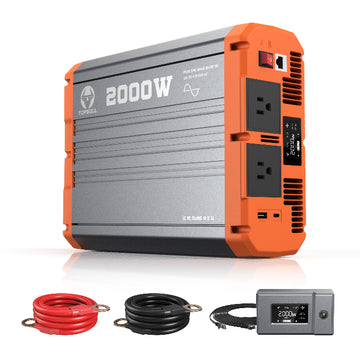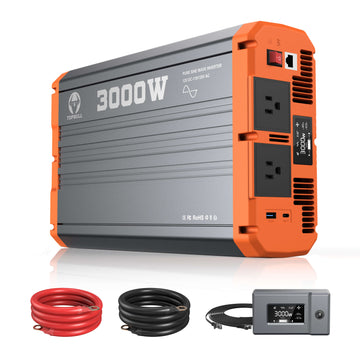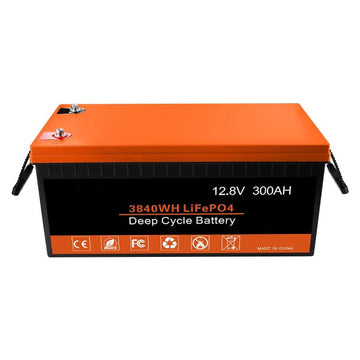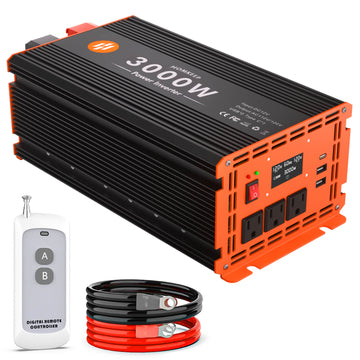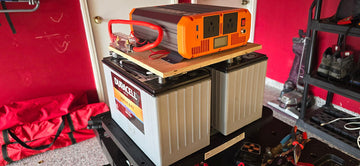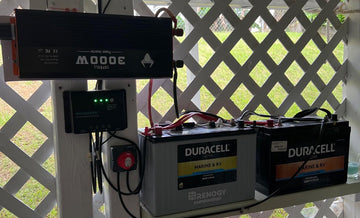Lithium batteries have become an indispensable energy source for mobile devices, electric vehicles and energy storage systems with their advantages of high energy density, long life and no memory effect. However, the performance of Li-ion batteries decreases with time of use, especially their charge cycle times, which become a key indicator of battery durability. This article will take an in-depth look at the charge cycles of Li-ion batteries, with the aim of helping readers understand how to optimize battery performance and extend their lifespan.
Understanding Lithium Battery
Lithium batteries are batteries with lithium as the main component, and their basic structure consists of an anode, a cathode and an electrolyte. Lithium-ion batteries are the most common type and their operating principle is based on the migration of lithium ions. During charging, lithium ions move from the anode to the cathode, storing energy; during discharge, lithium ions return from the cathode to the anode, releasing energy. This process constitutes the charging cycle of lithium battery.
With the advantages of high energy density, long cycle life, low self-discharge rate, and environmental protection, lithium batteries are a widely used battery type in modern electronic devices. However, the performance of Li-ion batteries is also affected by a variety of factors, such as temperature, charging rate, depth of discharge and so on.
What is a charging cycle
The charging cycle is a complete process in which a battery starts from a fully discharged state (i.e., depleted to its lowest usable voltage or capacity), recovers to a fully charged state (i.e., fully charged to its highest usable voltage or capacity) through the recharging process, and is then discharged to a fully discharged state again. This process is considered a charge cycle. The charge cycle is one of the most important indicators of battery durability and life.
Importance of Charge Cycle
Measurement of Battery Life:
The number of charge cycles is a key indicator of battery life. With the increase in the number of charging cycles, the internal structure of the battery will gradually change, such as the loss of active substances, the decomposition of the electrolyte, etc. These changes will lead to a decline in the performance of the battery, such as a decrease in capacity and an increase in internal resistance. Therefore, knowing the number of charging cycles of the battery can help us predict the remaining life of the battery and replace the aging battery in time to avoid equipment failure due to battery problems.
Optimize battery usage:
Understanding the importance of charge cycles helps us optimize the way we use our batteries. For example, by avoiding frequent deep discharges (i.e., draining the battery to very low levels), we can minimize damage to the battery and extend its cycle life. At the same time, adopting the right charging strategy, such as an intelligent charge management system, can slow down the rate of battery aging and improve battery utilization.
Reduce replacement costs:
For devices that rely on battery power, battery replacement costs are often high. By optimizing the charging cycle and extending battery life, the replacement cost of equipment can be reduced and the efficiency of equipment use can be increased. This is especially important for large devices such as electric vehicles and energy storage systems, where the cost of batteries accounts for a large portion of the total cost of the device.
What is Deep Charging and Shallow Charging
Deep charging and shallow charging are concepts that describe the degree to which power is depleted and replenished during the charging process of a battery.
Deep Charging
Deep charging is the process of charging a battery from an almost fully discharged state (near its minimum usable voltage or with very little charge remaining) until it is fully charged. During this process, the chemical reactions within the battery are more violent, as a large amount of charge needs to be replenished. Frequent deep charging may accelerate the aging process of the battery because deep discharging and subsequent charging can cause small changes in the internal structure of the battery that can gradually accumulate and affect the performance of the battery.
Shallow Charging
In contrast, shallow charging means that the battery is charged before it reaches its minimum usable voltage or when it has a large amount of power remaining, and may not be charged to its full capacity. Shallow charging helps to reduce the intensity of chemical reactions within the battery, which may extend the cycle life of the battery. This is because shallow charging prevents the battery from going through deep discharge and charge cycles, reducing damage to the internal structure of the battery.
In practical applications, shallow charging is often recommended to extend the life of a battery and improve its performance. For example, in electric vehicles and energy storage systems, the cycle life of a battery is extended by optimizing the charging strategy, such as setting a charging threshold, to avoid the battery from experiencing frequent deep discharging and charging.
Overall, the choice between deep and shallow charging depends on the specific application scenario and requirements. In scenarios where the battery capacity needs to be maximized, deep charging may be selected; whereas in scenarios where the battery life needs to be extended, shallow charging is preferred.
How many times can a lithium-ion battery be cycled?
The cycle life of lithium-ion batteries is a complex issue because it is affected by a variety of factors, including the type of battery, materials, manufacturing process, conditions of use, and maintenance practices. Generally speaking, lithium-ion batteries can be cycled 500 to 800 times under good use and maintenance conditions, and this number will gradually decrease as the number of times they are used increases. However, there are high-quality or specially designed lithium-ion batteries that can achieve higher cycle times.
Different types of lithium-ion batteries (e.g. lithium ternary batteries, LiFePO4 batteries, lithium titanate batteries, etc.) have different cycle lives. For example, lithium titanate batteries have a very long cycle life, which can reach more than 10,000 cycles; while lithium iron LiFePO4 batteries have a relatively high number of cycles, which can usually reach about 2,000 cycles; and the cycle life of LiFePO4 batteries may range from 400 to 1,200 cycles, depending on the quality of the batteries and the manufacturing process.
The cycle life of Li-ion batteries is also affected by the conditions of use. For example, the greater the depth of discharge, i.e., the battery is discharged to a lower voltage or lower residual charge, the greater the damage to the battery and the number of cycles will be reduced accordingly. In addition, both high and low temperatures can adversely affect battery performance and accelerate battery aging, thus affecting the number of cycles.
Factors affecting the number of charge cycles of lithium batteries
There are many factors affecting the number of lithium battery charging cycles, mainly including the following aspects:
1. Charging method
- Fast charging: Although fast charging can save time, frequent use may cause damage to the battery, resulting in a shorter life cycle. Slow charging is usually gentler on the battery, especially in the initial stages of charging.
- Trickle charge: Used to keep the battery in a full state when it is not enough to increase the number of cycles, but rather used to prevent overcharging when the battery is fully charged.
2. Depth of Charge
- Deep discharge: Discharging the battery to a very low level (e.g. 20% or less) accelerates battery aging and depletion. Avoiding deep discharging and keeping the battery in the 40% to 80% range is more conducive to prolonging the life of the battery.
- Partial charging: Regular partial charging (e.g., daily charging to 70%-80%) can reduce the number of charge cycles and provide a more optimal usage environment.
3. Temperature
- Charging Temperature: The optimal charging temperature for lithium batteries is generally between 20°C and 25°C. Excessively high or low temperatures may cause damage to the battery. High temperature will accelerate the chemical reaction of the battery and lead to rapid aging, while low temperature may lead to degradation of battery performance and capacity loss.
- Ambient Temperature: Prolonged use of charging equipment at high or low temperatures can also have a negative impact on the battery.
4. Discharge rate
- High discharge rate: High-intensity discharge (e.g., when used in high-power equipment) can cause the battery to lose energy and generate heat quickly, leading to accelerated chemical reactions and thus affecting cycle life.
5. Battery Materials
- Battery chemistry: Lithium batteries with different chemical compositions (e.g. lithium cobalt oxide, lithium iron phosphate, etc.) have different cycle stability and performance characteristics. Some materials can maintain better cycle life, while others may degrade in a shorter period of time.
6. Lithium Battery Management System (BMS)
- Efficiency of the management system: An efficient Li-ion battery management system can monitor the battery status in real time, optimize the charging and discharging process, reduce the risk of over-charging and over-discharging, and help to extend the service life of the battery.
7. Charger quality
- Charger type: Using unqualified or incompatible chargers may lead to unstable charging and affect the health of the battery. A charger with intelligent adjustment function will be more helpful to extend the life of the battery.
8. Usage habits
- Daily use: Frequent charging, long periods of non-charging or casual use of the battery will affect its cycle times and health, so it is especially important to maintain good charging and use habits.
Understanding and managing the above factors can effectively extend the number of charging cycles of lithium batteries, and thus improve the service life and performance of the battery. Maintaining scientific charging and usage habits is important for reducing the frequency of battery replacement and the economic burden.
How to extend the cycle life of lithium batteries
In order to extend the cycle life of lithium ion batteries, users can take the following methods:
1. Reasonable charging and discharging
- Avoid deep discharge: try to charge the battery when it reaches 20%-30% of its capacity, rather than waiting until it is completely discharged. Keeping the charge between 20% and 80% can effectively extend battery life.
- Regular charging: There is no need to wait for the battery to run out of power before charging, regular small charge is more conducive to the maintenance of the battery.
2. Control the charging environment
- Suitable temperature: Charging and use between 20°C and 25°C is ideal, avoid charging and use under extreme temperature (too high or too low) to minimize the damage to the battery.
- Avoid hot environments: Charging in hot environments (e.g. in direct sunlight or inside a car) will harm the battery, try to find a cool place to charge.
3. Use the right charger
- Choose a good quality charger: Use a manufacturer-recommended or certified charger to ensure that the charging voltage and current match to avoid damaging the battery.
- Avoid lightning strikes and overcharging: Use smart chargers with anti-overcharging and automatic power-off functions to minimize battery damage.
4. Regular Battery Maintenance
- Regularly calibrate the battery: You can periodically fill the battery, then discharge it completely and fill it again to help the battery management system to re-calibrate the battery status.
- Monitor battery health: Use the Battery Monitor app to view the health of your battery and the number of cycles it has been through to identify and resolve potential problems.
5. Optimize device settings
- Reduce device power consumption: Adjust device settings to turn off unnecessary features and apps and reduce screen brightness to minimize battery usage.
- Use Power Saving Mode: Enable Power Saving Mode to reduce power consumption when you need to extend battery life.
6. Avoid frequent high-load usage
- Reduce high-intensity applications: Try to avoid long-term use of large applications that require high power consumption (e.g., gaming, video editing, etc.), which can accelerate battery depletion.
7. Don't overcharge
- Avoid plugging in for long periods of time to charge: unplug the charger in time after charging is complete, and don't leave the device in charging state for a long time, which will help protect the battery.
FAQ
Should lithium batteries be fully discharged before recharging?
Not necessarily. Frequent deep discharging will accelerate battery aging. Whenever possible, a shallow charging strategy is recommended to extend battery life.
Does rapid charging affect battery life?
Yes. Fast charging, while convenient, increases internal battery pressure and accelerates battery aging. Therefore, slower charging rates are recommended when possible.
What is the best temperature to store lithium batteries?
The optimal storage temperature for lithium batteries is usually between 15-25 degrees Celsius. Avoid prolonged high or low temperature storage to prolong battery life.
Is the cycle life of lithium batteries fixed?
No. The cycle life of lithium batteries is dependent on a number of factors. The cycle life of Li-ion batteries is affected by a variety of factors, such as battery material, manufacturing process, and usage conditions. Therefore, the cycle life of the battery can be extended by optimizing the charging strategy and usage conditions.
How do I know the lithium battery needs to be replaced?
When the battery's usage time is significantly shortened, heats up severely when charging, or fails to hold a charge, it may be a sign to replace the battery.
What is the optimal charging frequency for lithium-ion batteries?
It is recommended to charge whenever the charge level falls below 20%, depending on usage, keeping the charge level between 20% and 80% is optimal.
Is it OK to leave a lithium-ion battery on the charger?
Leaving a lithium-ion battery on the charger for an extended period of time is generally not recommended. Modern devices have smart charging technology to prevent overcharging, but prolonged charging can cause the battery to overheat and age faster. The best practice is to unplug the charger after charging to 80-90% to extend battery life.

